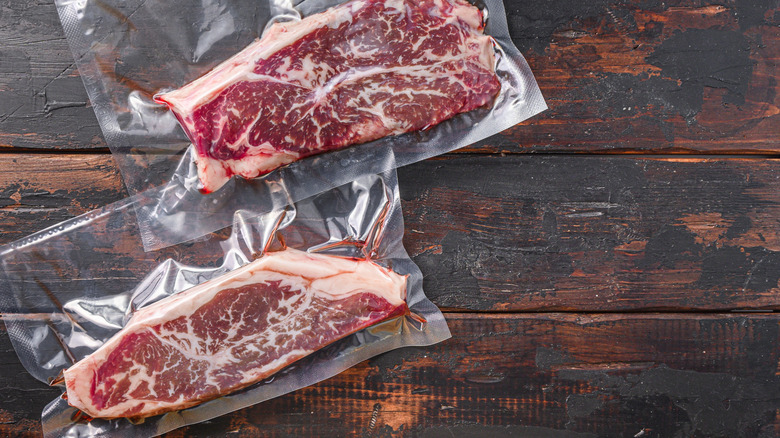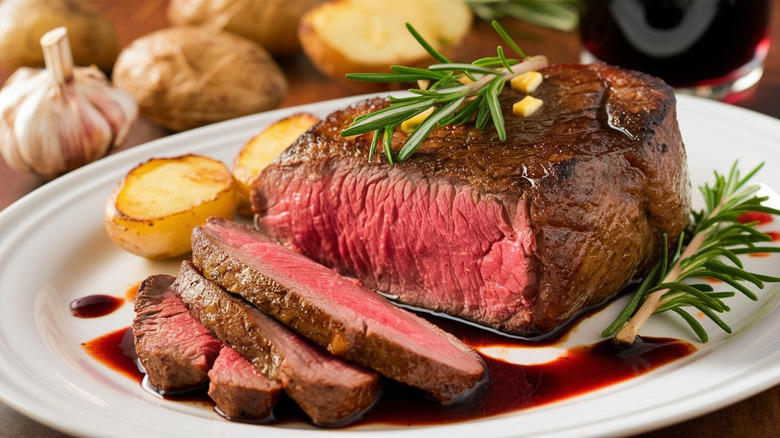Why Thicker Cuts Are Better When It Comes To Sous Vide Steak
Sous vide is one of those terms that sounds intimidating until you get a chance to try your hand at it. In reality, it's a beautiful method of marinating in the form of vacuum sealing, and it can remove inconsistency from your cooking process while loading up on flavor and tenderness. Steak is one of the most popular items to cook in this style, as it allows for perfect levels of doneness every time, but there's one thing you should always prioritize when going down this road: using a thick cut of meat.
Steaks that are between one and a half and two inches have time to develop the perfect, ubiquitous pink interior temperature while developing a beautiful, dark crust on the outside. While by no means impossible, thinner cuts are harder to sear at the end of the process without overcooking the interior.
For medium-rare steaks, try to cook them between 129 and 134 degrees Fahrenheit, as this will help find that steakhouse quality balance between juiciness and tenderness. Cooking times vary: A one-inch steak can be cooked for about 40 minutes while a two-inch steak can cook for an hour up to four, depending on your specific machine and the weight of your meat.
Once you've cooked your thick-cut steak to its prescribed doneness, it's time to follow the last in the four-step process of sous vide cooking: finishing it. Add your final seasonings, then sear the meat to develop the perfect crust to complement the evenly cooked interior.
Tips to get the best sous vide steak
Cooking sous vide may initially require some adjustments, not only in technique but also in seasoning. While you may be used to rubbing steak down with salt and garlic, that probably won't work for a sous vide steak. The water bath cooks at too low a temperature to break down aromatics like garlic and onions, and can yield undesired flavors, which is why garlic powder is preferable to cloves. Just don't overdo it with the powder — in this case, less is more.
It's also worth experimenting with pre-salting your steaks before sealing them. While some say to season it as usual, others find that adding salt before the water bath can result in a chewier texture.
You can sous vide frozen steaks for added convenience, but make sure to include generous amounts of marinating seasonings like fresh rosemary or thyme, as well as black pepper, and increase the cooking time by about 25%. It's also important to remember that using a sous vide method is more science than art. You're already committing time and, ideally, a relatively high-quality cut of meat to the process; "just winging it" is one of the most common mistakes you can make. Go for precise times and temperatures to ensure that you get the most out of your cooking process.


